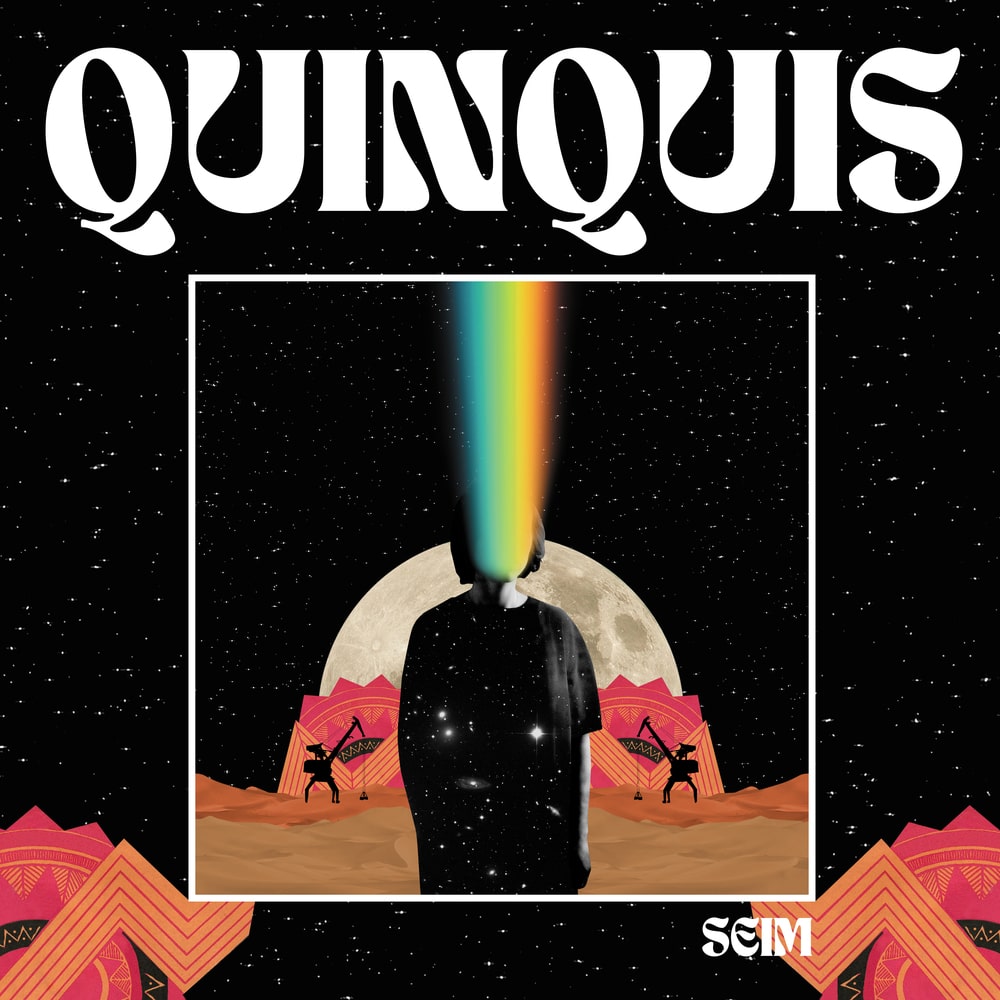On Her Debut Album, QUINQUIS Collaborates with Producer Gareth Jones, Incorporates the Breton Language and Culture, and Finds Harmony of Cosmic Sorts
Émilie Tiersen has, over the course of two albums and several years, made music as Tiny Feet and is now, with the release of Seim, her debut for Mute, known as QUINQUIS. The name change is symbolic; simultaneously paying homage to her personal and family history by referencing her maiden name, as well as representing a fresh start musically. “It’s been a new start for many things,” Émilie says. “Self-acceptance has been a really big thing for me.”
I went back to my roots…
Émilie Tiersen (née Quinquis)
From forging a deeper connection to her own culture, history, and identity, to exploring new musical terrain and becoming a mother, it’s been a period filled with significant change. It was during this time that she began to explore new ideas. “I was on tour with Yann [her husband, Yann Tiersen] and our baby,” she recalls. “During my baby’s nap I created a rule for myself: to come up with one new idea in every new city. From the very beginning this was a journey.”
Soon people began to join Émilie on this journey. Characters – some from her own life, others rooted in the history of Breton culture – began to come alive in song ideas. She discovered Ankou, a servant of death in Breton mythology who comes to see you in the year that you die; she explored Seiz Breur, a 1923 Breton art movement founded by a young woman in the very same small village she is from; she tapped into the lives of friends, exploring a rich tapestry of people, places, emotions, and stories all tied together by a shared commonplace: Brittany.
…And I realised how much Breton culture was a part of me.
Émilie Tiersen (née Quinquis)
Once these ideas began to mutate into something more musical, she connected with Gareth Jones, celebrated producer who has worked with groups such as Liars, Depeche Mode and Apparat. He initially offered to play some synths but their partnership grew into something more. “The record revealed itself in the back-and-forth Gareth and I had,” she says. “It was really unexpected because Gareth and I are quite the opposite. We are really different on paper but through this album we’ve shared something unexpected. He’s got a bit of a mentor aura – he was the light to my darkness.”
The result of their work is one that merges sparse electronics, immersive atmospherics, and deft melodies, all of which are carried by Émilie’s tender yet quietly soaring vocals.
To make it even more unique, Émilie sings throughout in Breton. “Singing in the Breton language made me realise what I was made from,” she says. “Everything was suddenly easier and it gave me more freedom. It’s a very special language and so to write interesting lyrics was a process of researching but it was so nourishing to discover new stuff about nature or people thanks to that language.”
In the preceding weeks to album release, QUINQUIS released ‘Netra Ken’ from the collection, and soon after unveiled a special live performance video of the track recorded at The Eskal on the island of Ushant.
On the track, writer and endurance cyclist Emily Chappell features, reading an extract from her book (in Welsh) Where There’s A Will, capturing her determination and resilience. Talking further about the use of language on the album, Tiersen explains, “I think languages are a living way of telling people’s mind and culture, their diversity brings us closer and helps us understand better. That’s why I was happy to have Welsh and Faroese along with Breton in the record…they are somehow cultures that seem close to mine.”
Nature is key to the album and lends itself to the title, as well as key themes in individual songs. The album title Seim translates as “sap”. “It’s really about when you have low energy,” Émilie says, “and you need to recollect the sap so that the tree gets green again. The whole album was really about making me green again. The more I recorded music, the more I felt green.”
This sense of rejuvenation, rebirth, and a musical awakening coincided with Émilie plunging into her own community, history, and culture. “The more I was learning about myself, the more I was discovering the people around me,” she says.
A multifaceted album, Seim is deeply personal and introspective yet also collaborative and expansive. It is rooted in both historical and modern stories. It is an album that connects worlds while being entirely its own. “There is something cosmic about it,” says Émilie. “I don’t know how to explain that but the way it happened with Gareth, and the way everything just suddenly all came together feels like cosmic harmony.”
It’s also an album that brings to life, in a singular and contemporary way, the lives, stories, and people of the Breton culture and its language. “The album was a way for me to tell stories of the people here. I really felt that during the whole process that through stories I could tell the history of Brittany or Ushant. It’s an album that is full of ghosts. I’m happy with that. I have a good relationship with ghosts.”
Seim arrives on May 20th via Mute, digitally, and on CD and vinyl.
Follow QUINQUIS here: WEBSITE | INSTAGRAM | TWITTER | FACEBOOK
Next In Next In
⇥ Yann Tiersen’s Most Overtly Electronic Material to Date: ‘Kerber’








